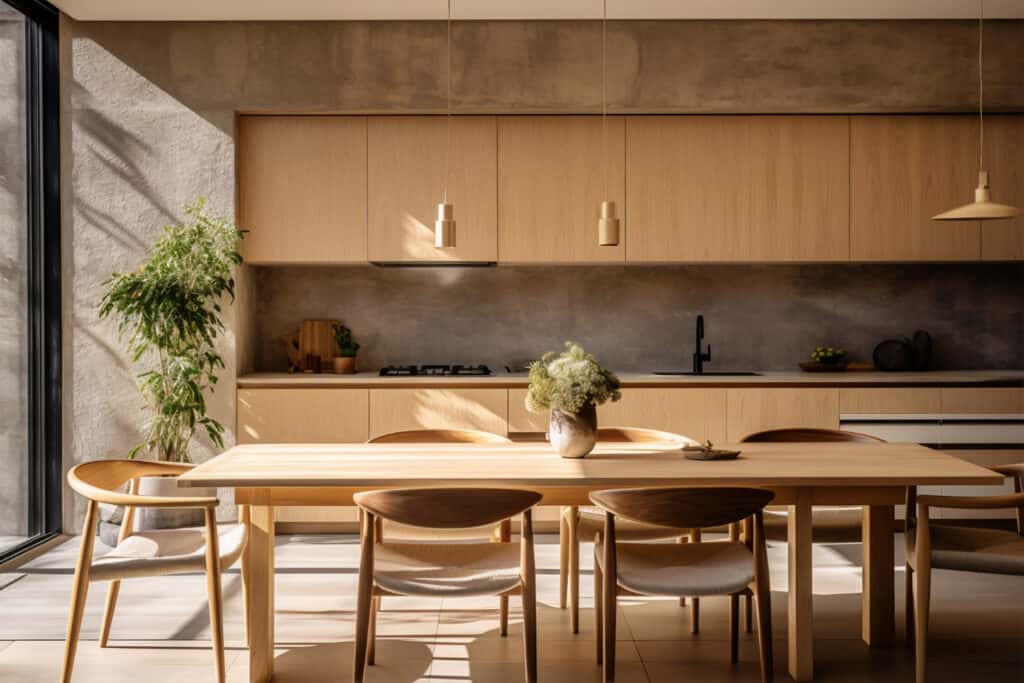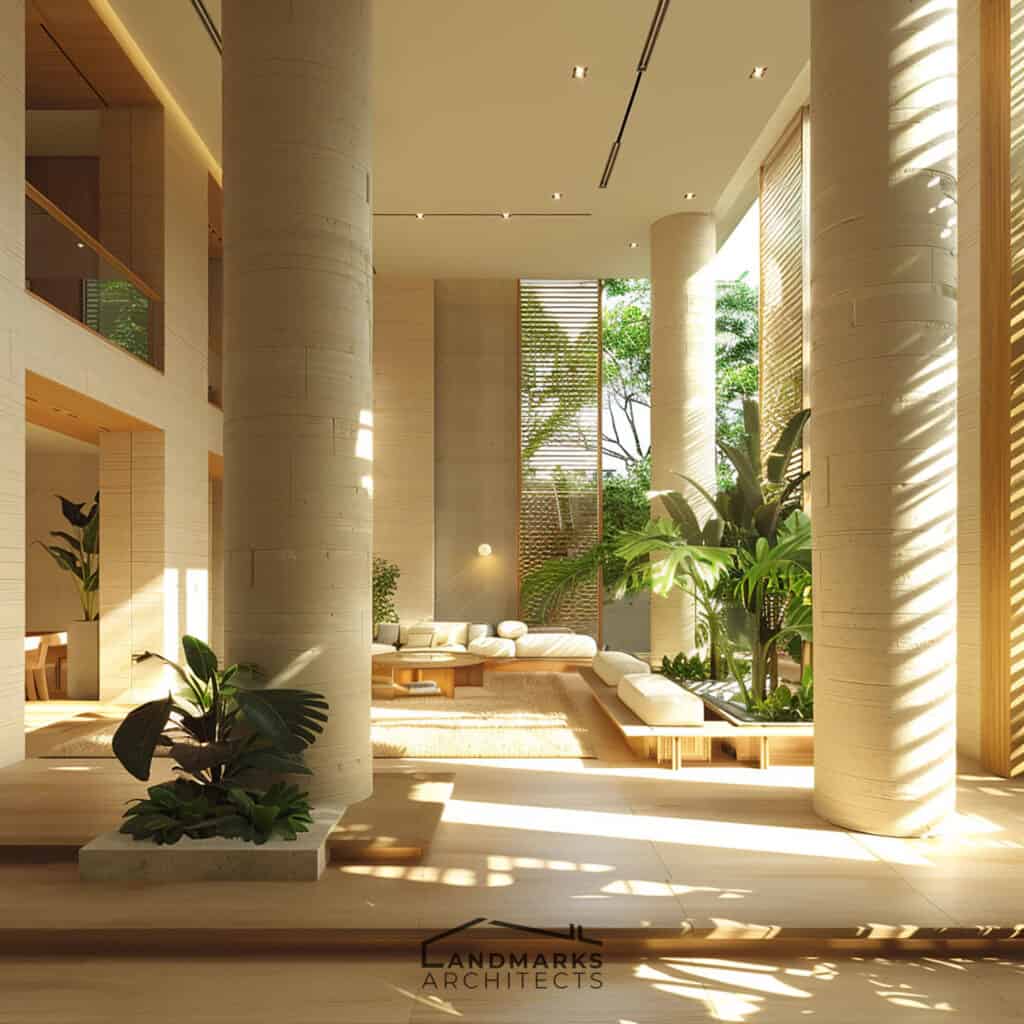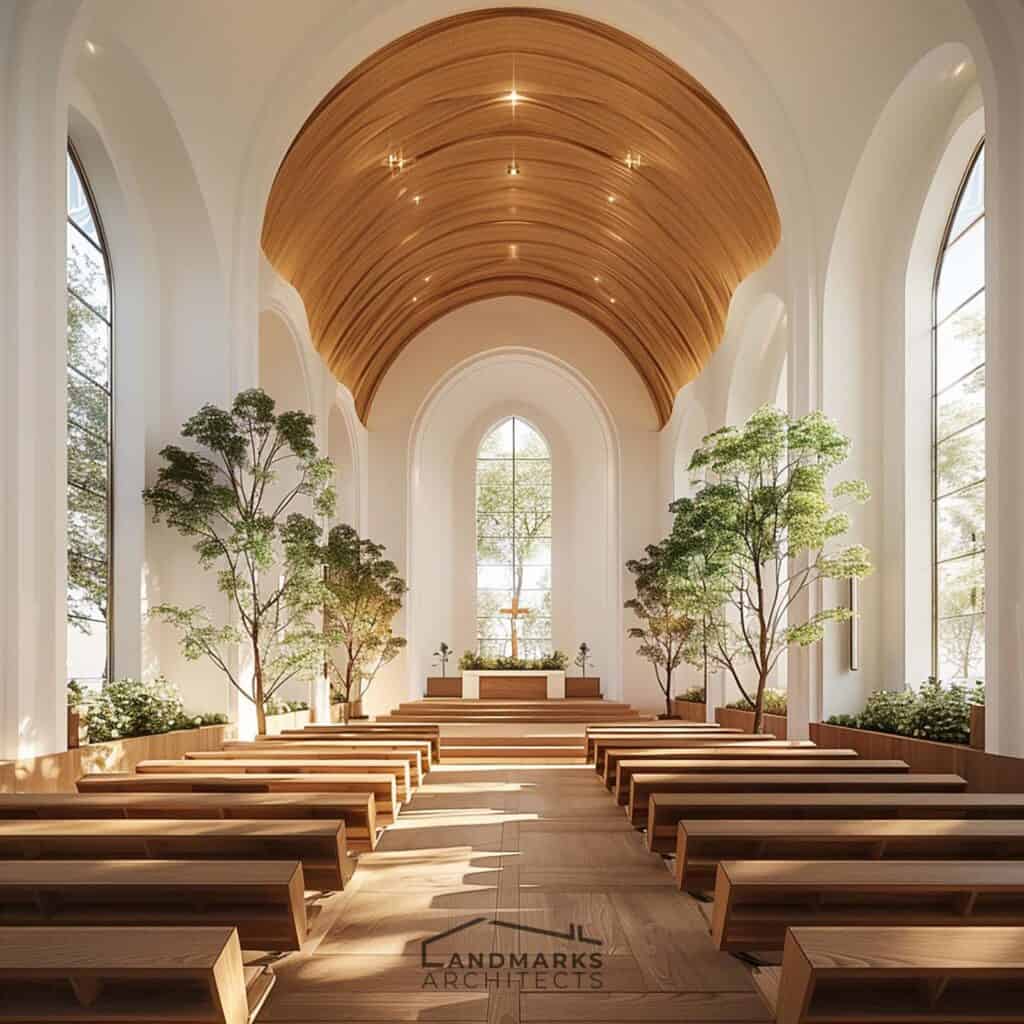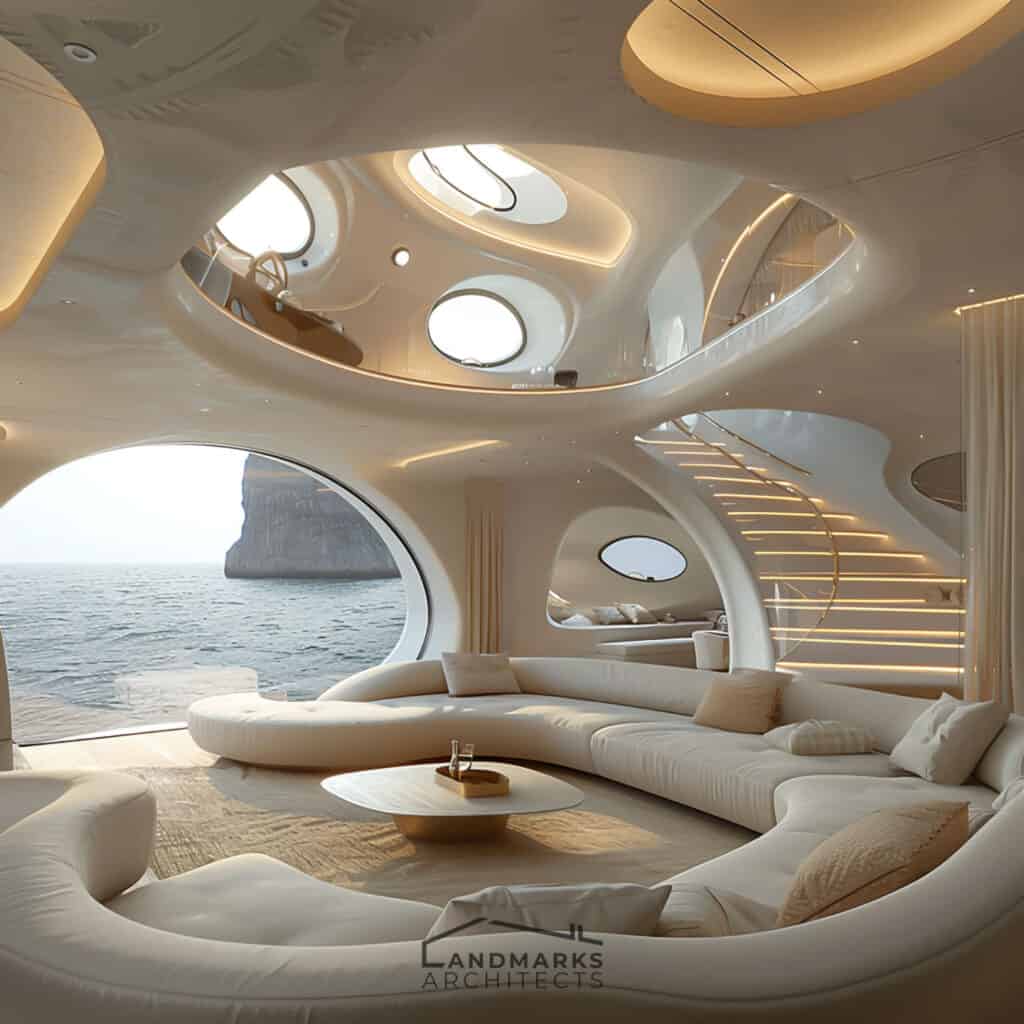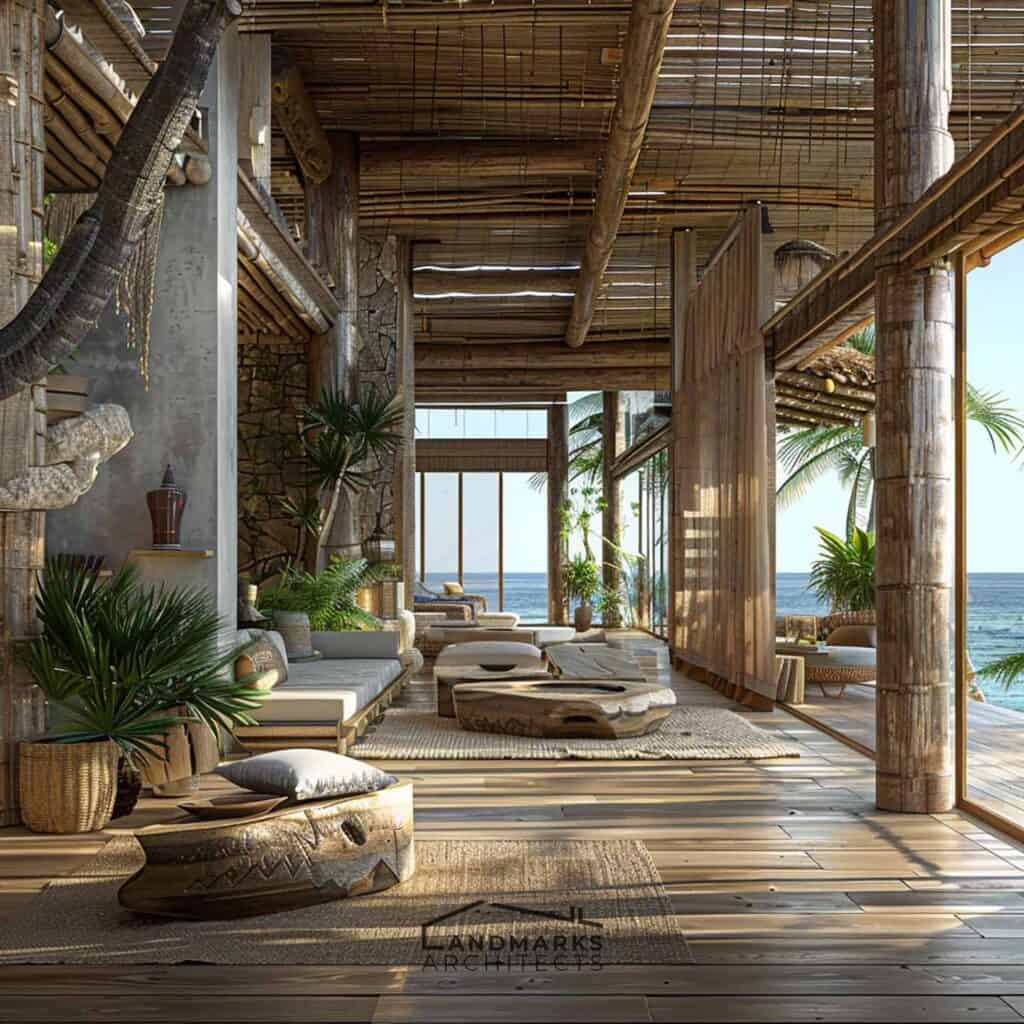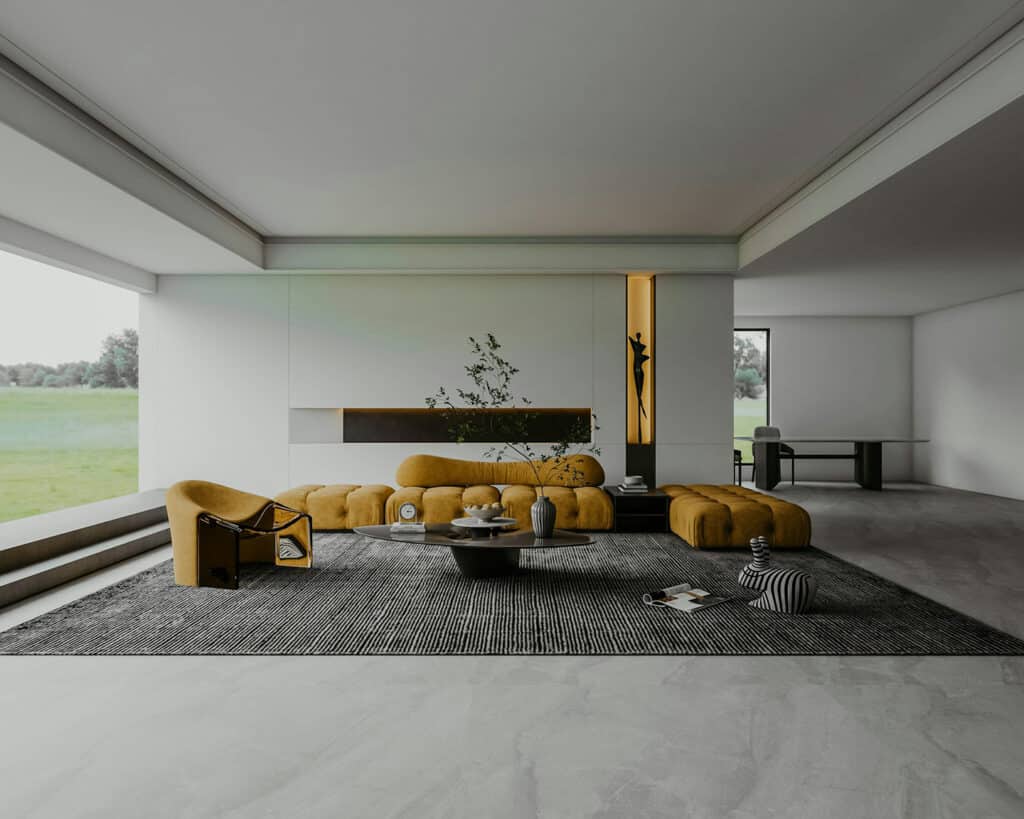
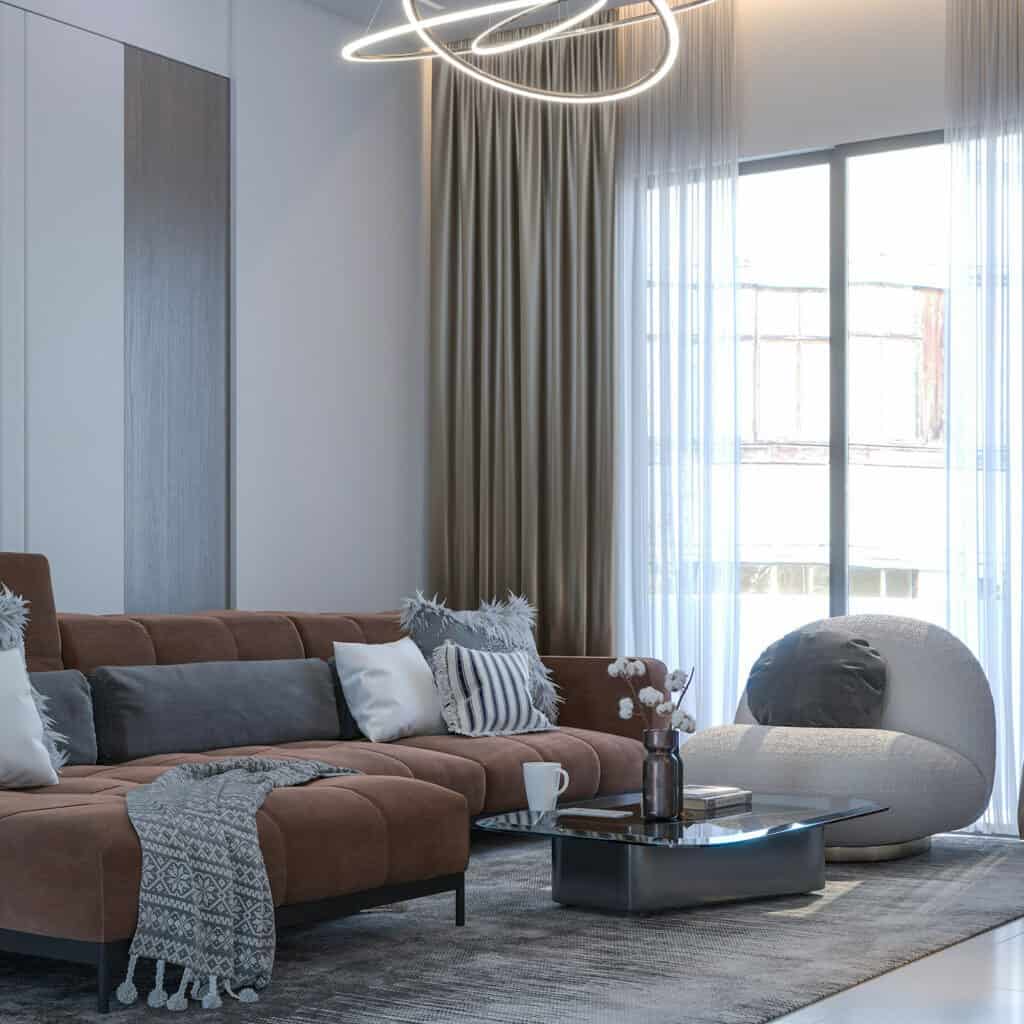
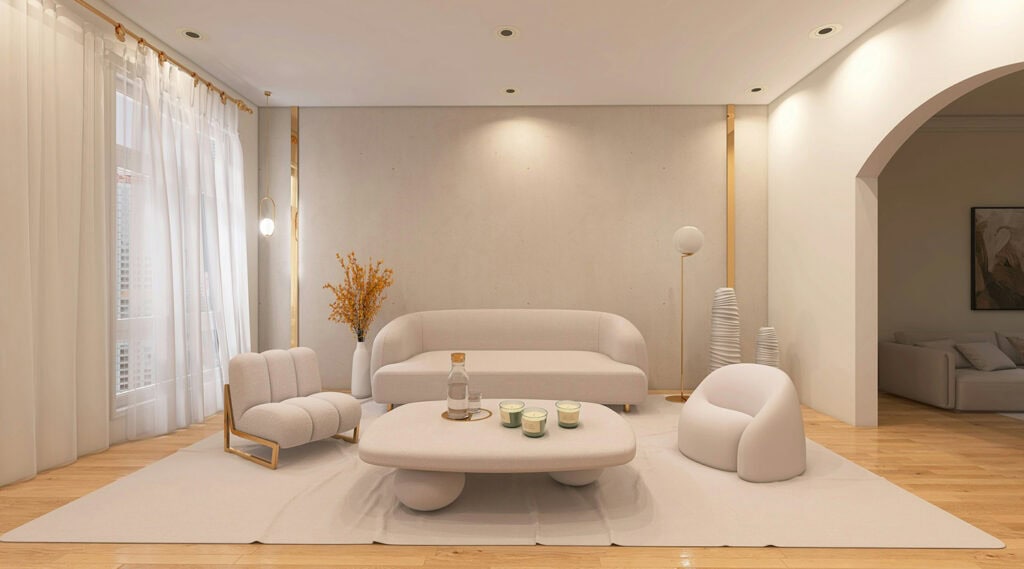
Looking to transform your space into something functional and beautiful? Understanding form in interior design is the key to creating a space that works for you.
At Landmarks Architects, we’ll guide you through the essential principles to elevate your design. In this article, we’ll cover:
- Understand the basics of form in design
- Balance geometric and organic shapes
- Play with scale and proportion
- Leverage positive and negative space
- Create contrast and texture
- Incorporate effective lighting
- Channel functionality through the form
- Achieve unity and harmony
- Define functional zones
- Enhance your space’s flow and balance
Ready to learn how to design a space that works for you and your lifestyle? Keep reading to discover 10 powerful principles that will elevate your interior design.
- 1. Understand the Basics of Form
- 2. Balance Geometric and Organic Forms
- 3. Define Functional Zones
- 4. Play with Scale and Proportion
- 5. Leverage Positive and Negative Space
- 6. Create Contrast with Forms
- 7. Incorporate Natural and Artificial Lighting
- 8. Use Form to Add Texture and Pattern
- 9. Channel Functionality Through Form
- 10. Achieve Unity and Harmony
- Form in Interior Design: A Recap
- FAQ
Form is an important part of interior design. It helps shape how a space looks, feels and works.
The form also affects a room’s balance, flow, and appearance. It gives interior designers a solid base to create spaces that are both functional and beautiful.
When you understand the basics of form in interior design, you can change your space into something more welcoming and harmonious. Harmony in Interior Design is achieved when all the elements work together. Below, we will explore 10 key ideas to improve your interior design project.
1. Understand the Basics of Form
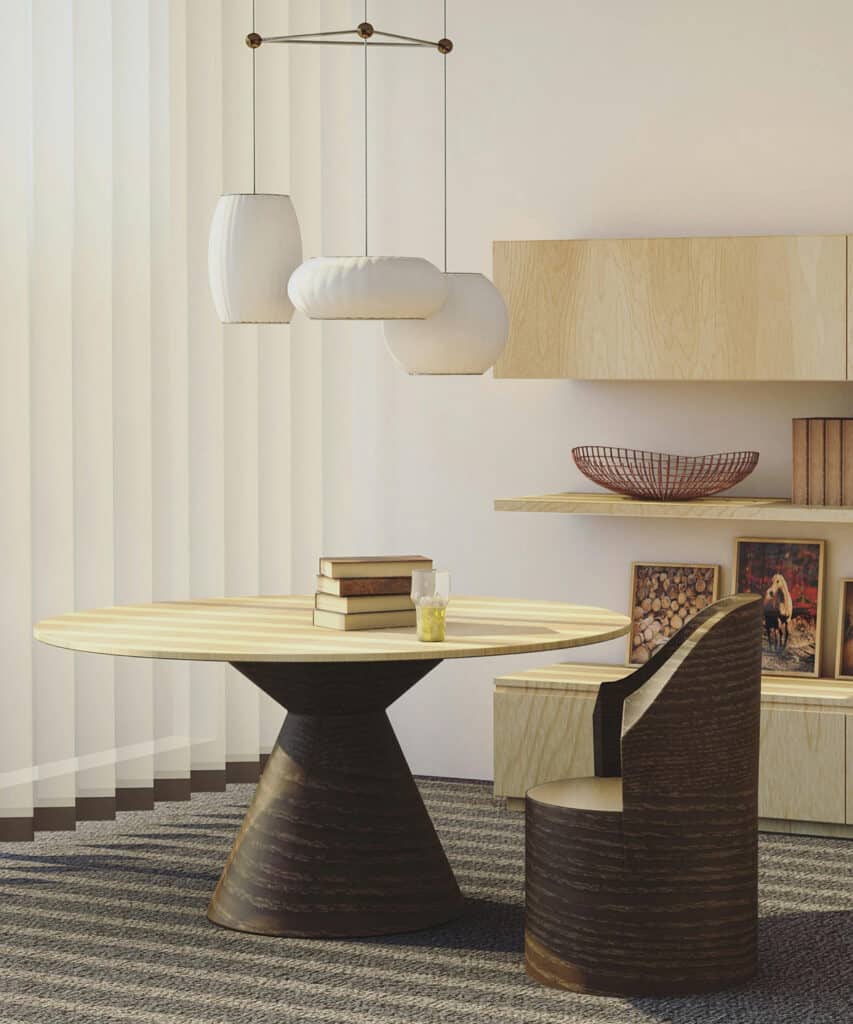
In interior design, form means the shape, structure, and size of objects in a space. These forms can be geometric, like squares, rectangles, and triangles. They can also be organic, inspired by natural shapes with curves and uneven edges.
Positive space is the area filled with objects, while negative space is the empty area around them. Both are important for creating balance in a room.
Edges show where one form ends and another begins. Some forms stand out, while others blend into the space. These forms work together to create the feel and style of the room.
See Also Interior Design Photography: 6 Steps to Professional Results
2. Balance Geometric and Organic Forms
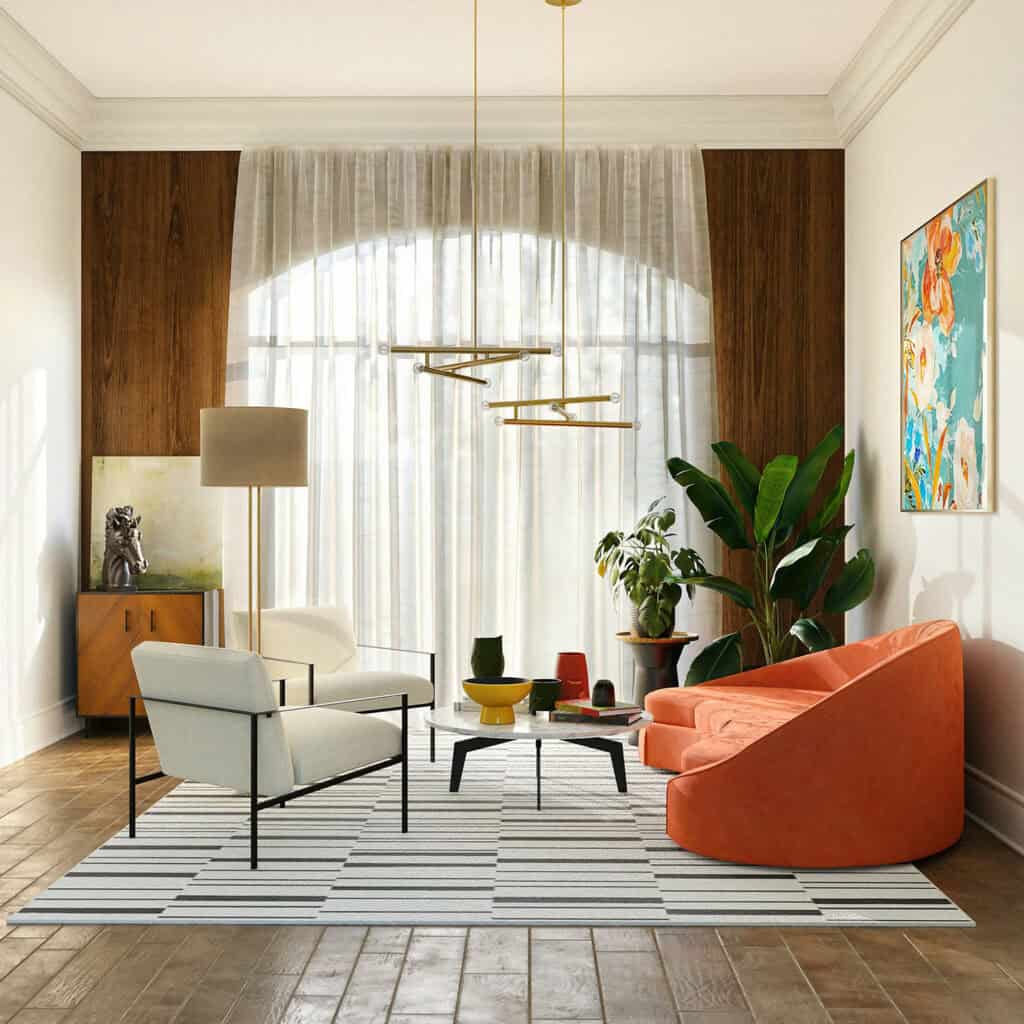
Combining geometric forms with organic shapes makes a space more interesting and balanced. For example, placing a curved sofa next to a rectangular coffee table brings together soft and strong shapes.
Geometric shapes, like squares, triangles, and circles, give the room symmetry and order. Organic shapes bring natural flow and warmth to the space.
These different types of shapes work together to create a cozy, harmonious environment. They balance the clean, structured look with the natural beauty found in organic forms.
3. Define Functional Zones
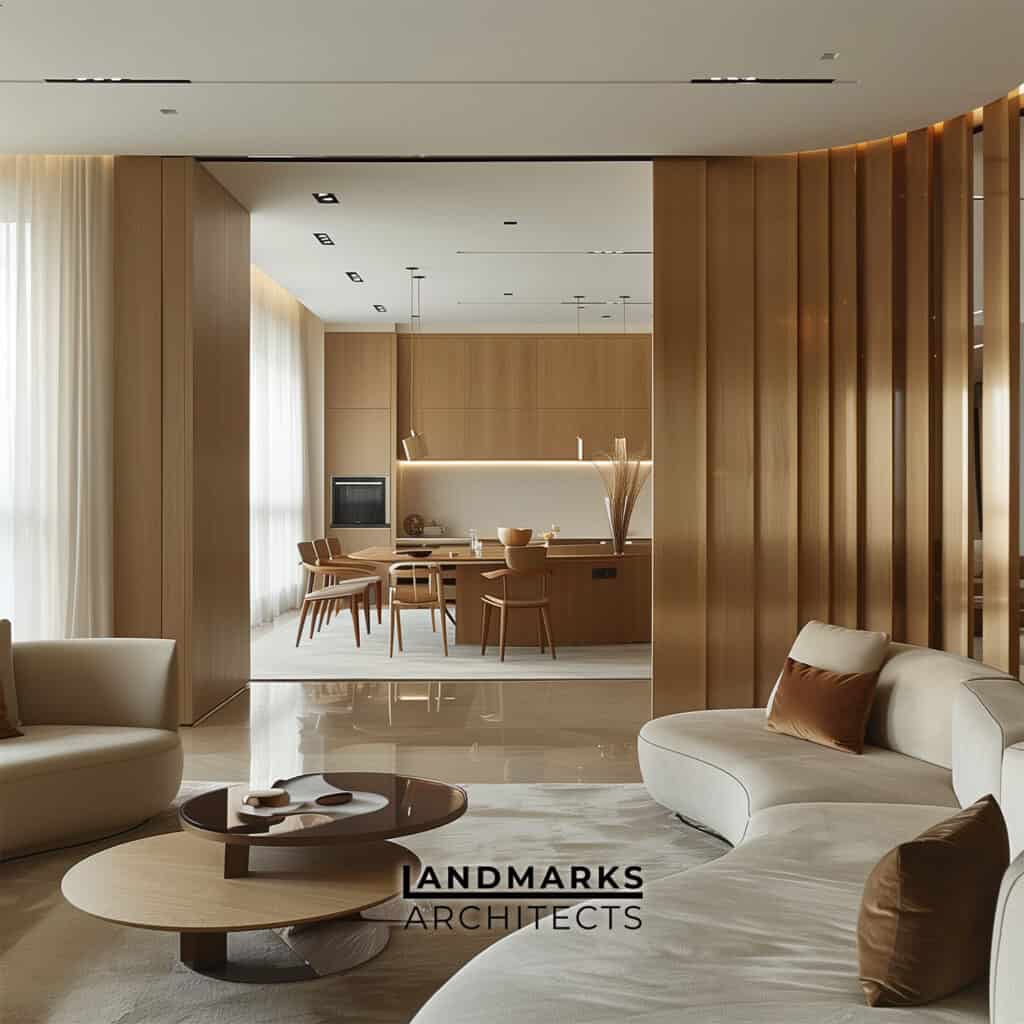
In open-plan layouts, forms help create different functional areas. For example, staggered shelving or wall dividers can visually separate the living room from the dining area.
Vertical lines and dynamic lines improve traffic flow and guide movement through the space. Curved lines help soften the edges and boundaries between different areas.
This approach lets you make the most of your floor plan while keeping everything organized and flowing well.
See Also Interior Architecture vs. Interior Design: 6 Key Differences
4. Play with Scale and Proportion
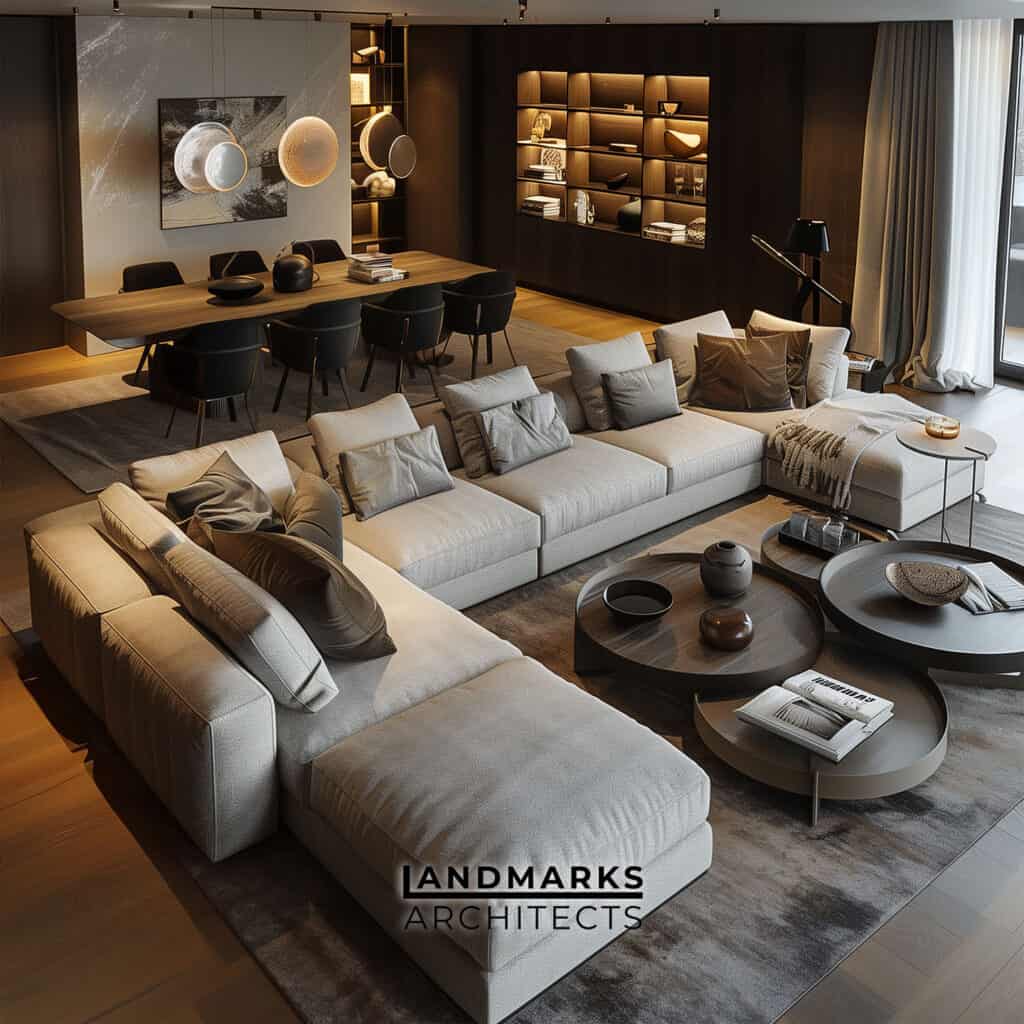
Scale and proportion are very important when choosing forms. Larger pieces, like a bold sectional sofa, can be the main focus of the room. Smaller items, like accent lighting or side tables, help create balance.
The key to good interior design is mixing large and small forms to keep the space balanced. For example, in a dining room, a large table with smaller chairs creates a composition that fits well and doesn’t make the room feel crowded.
5. Leverage Positive and Negative Space
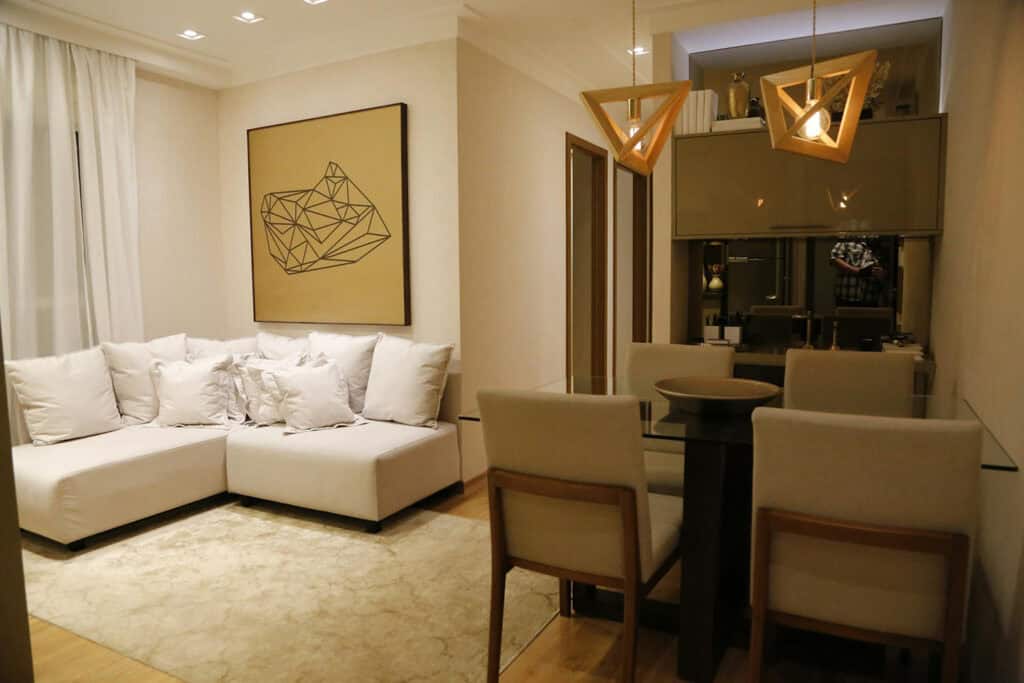
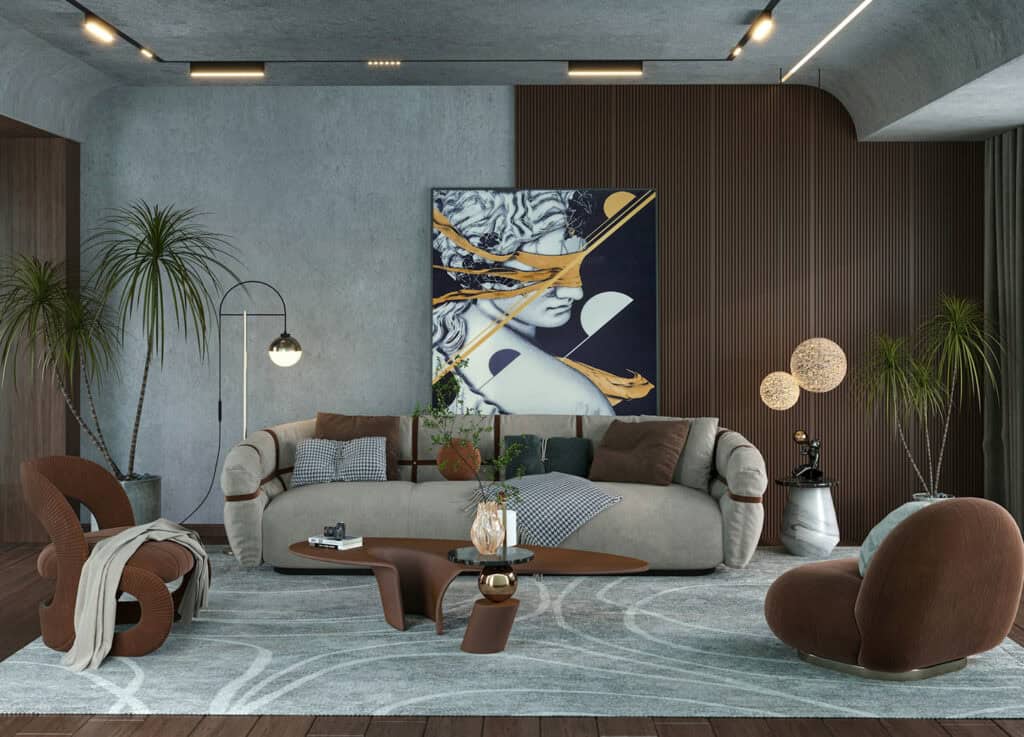
Using positive and negative space the right way helps keep a room from feeling too crowded or too empty.
In a small room, lighter forms and even spacing between furniture can make the space feel more open and airy.
In a larger room, bold textures and bigger pieces add depth and warmth, making the space feel fuller without being too empty.
Carefully placing furniture and using space wisely helps create harmony and balance in the room.
6. Create Contrast with Forms
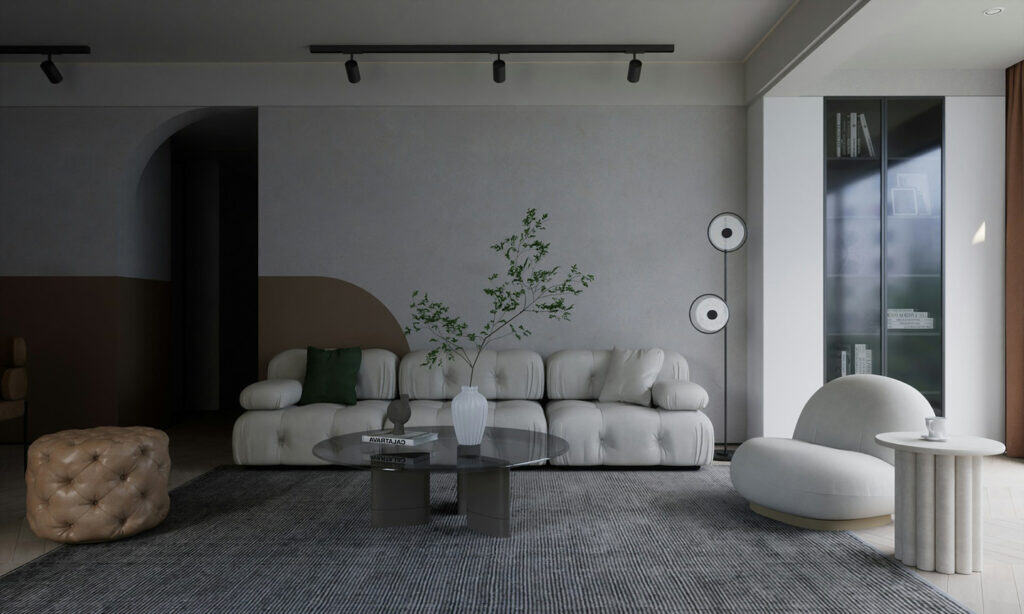
Creating contrast between forms brings excitement and visual interest to a room.
Combining angular furniture with rounded forms, like ring-shaped decor pieces, adds dimension and draws attention to the focal point.
This mix of shapes helps guide the eye and improves the visual hierarchy in the space.
For example, a curved sofa can contrast with a sleek, angular coffee table, making the room feel dynamic and engaging.
See Also Emphasis in Interior Design: 6 Techniques to Transform Your Space
7. Incorporate Natural and Artificial Lighting
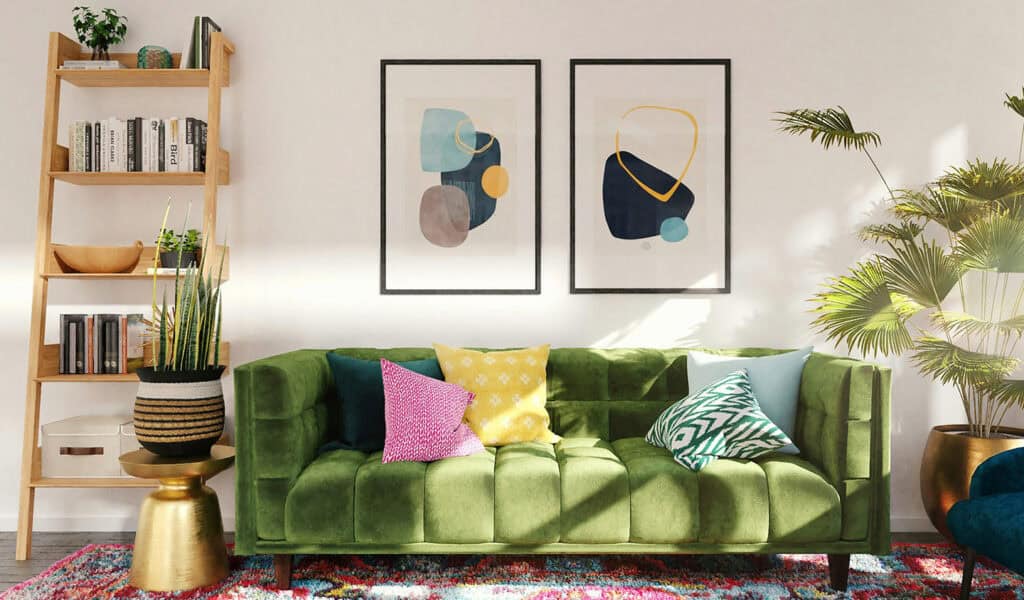
Lighting is essential in enhancing the forms of a space. Natural light helps highlight textures and visible contours, making the room feel brighter.
Strategic accent lighting adds depth and draws attention to architectural details. Lighting fixtures, whether sleek and modern or more ornate, are also key forms that fit the design style.
The right lighting creates shadows and brings focus to certain forms, making the space feel rich and layered.
8. Use Form to Add Texture and Pattern
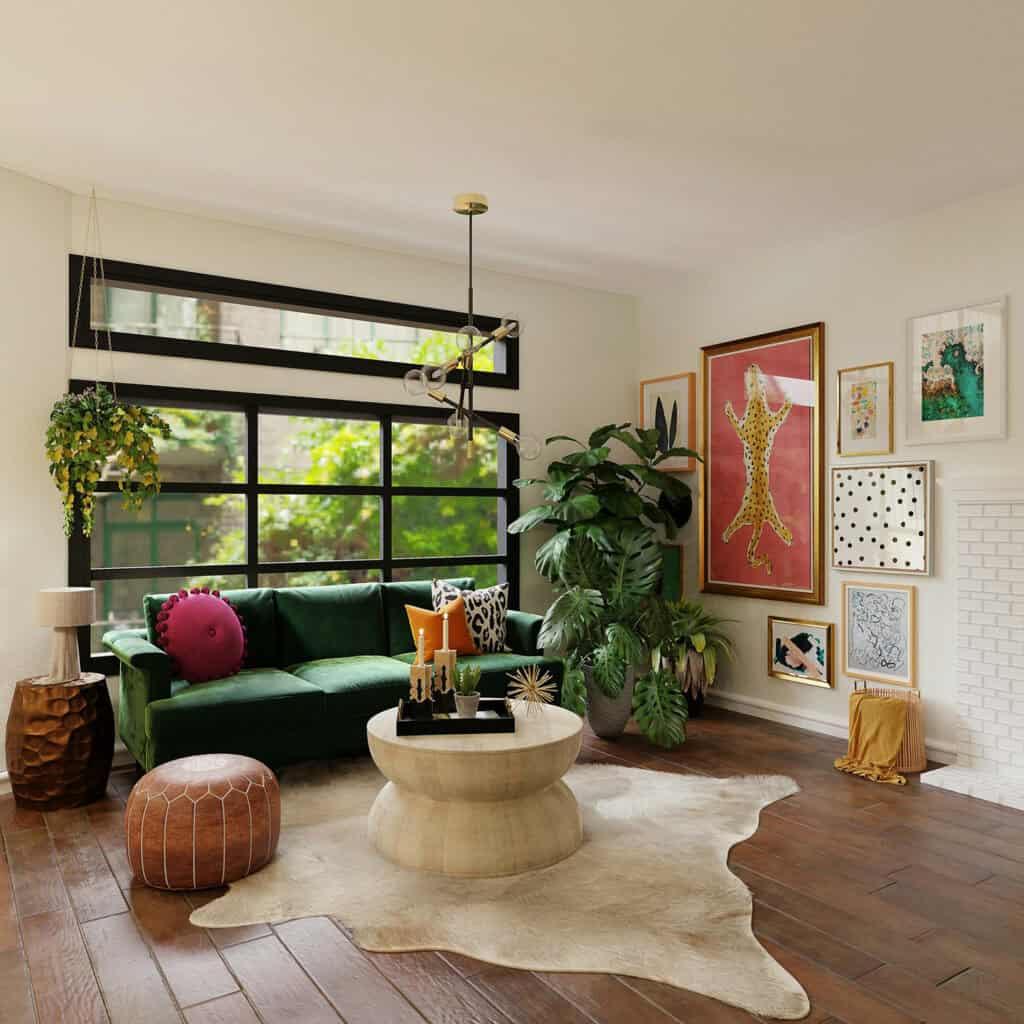
Textures and patterns give your space a new feel. They add a tactile dimension, making the room interesting to touch and see.
Geometric forms, like shapes in the flooring or the wood grain, and textures, like fabric weaves on furniture, contribute to the atmosphere in the room.
For example, a curved line in a rug pattern can match the curves of a curved sofa, helping everything fit together and feel balanced.
Designing motifs for wall decor or accent pieces can add depth and personality, making the space feel more inviting and unique.
See Also Green Interior Design: 10 Tips for a Natural Transformation
9. Channel Functionality Through Form
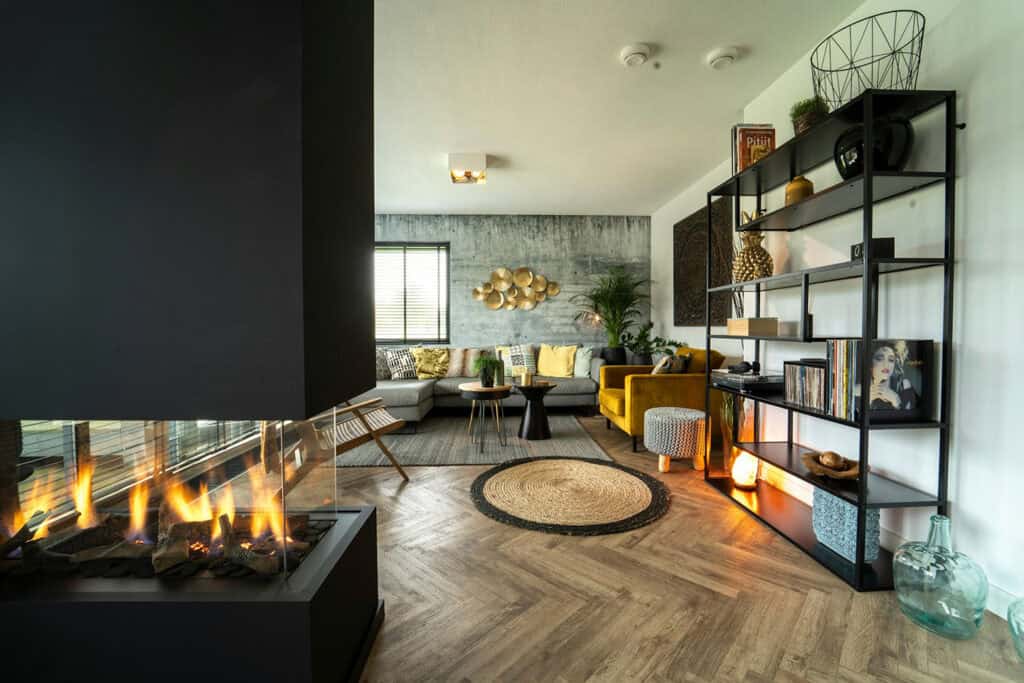
Forms should follow function. This means the shape and design of things in a room should make it easier to use.
Ergonomic furniture is designed to be comfortable. Open forms, like floating shelves, offer more storage without making the space feel heavy.
Carefully thinking about the spatial needs of the room helps make sure that every form has a practical purpose.
Functional zones in a room can be made clearer with wall dividers, staggered shelving, and other useful elements. These help to use the space more efficiently.
10. Achieve Unity and Harmony
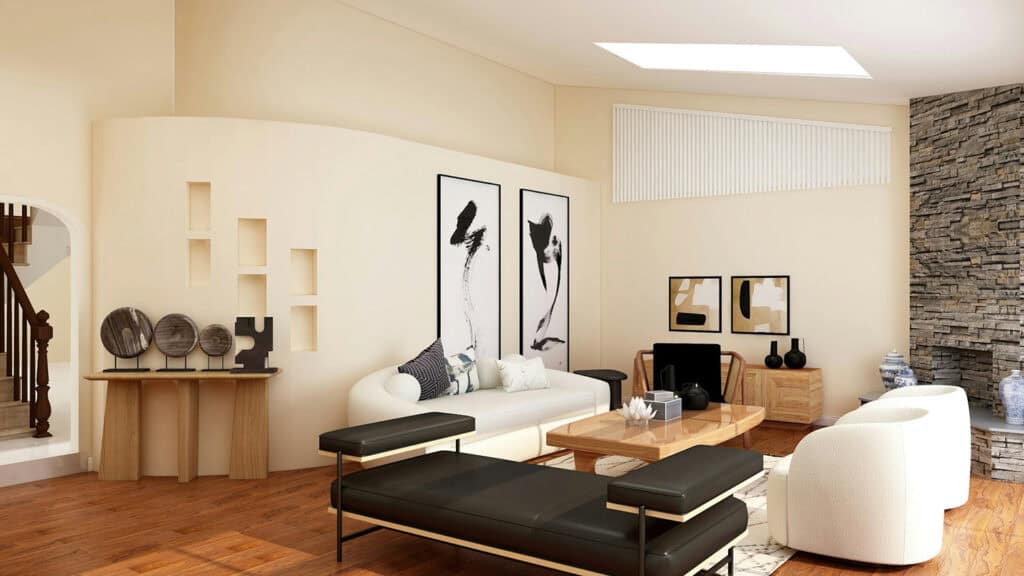
To create a cohesive interior, unity, and harmony are very important.
Aligning key forms and using unified forms throughout the space helps bring a sense of consistency.
Neutral colors and clean lines improve this effect, making the room feel calm and serene.
Unique forms, like eye-catching silhouettes or accent pieces, can add the perfect finishing touch to a well-designed interior.
By matching vertical lines and horizontal forms, you make sure the design feels balanced and polished.
See Also Moody Interior Design: 6 Steps to Create a Moody Space
Form in Interior Design: A Recap
Form in interior design is very important because it shapes how a space looks, feels, and functions.
When interior designers understand how different forms work together, they can create spaces that are both nice to look at and easy to use.
Whether using bold geometric forms, soft organic shapes, or improving the space with lighting, mastering the principles of form helps make the interior design project successful.
By carefully thinking about each element, like furniture pieces, natural materials, and textures, you can create a unified and inviting atmosphere in any room.




